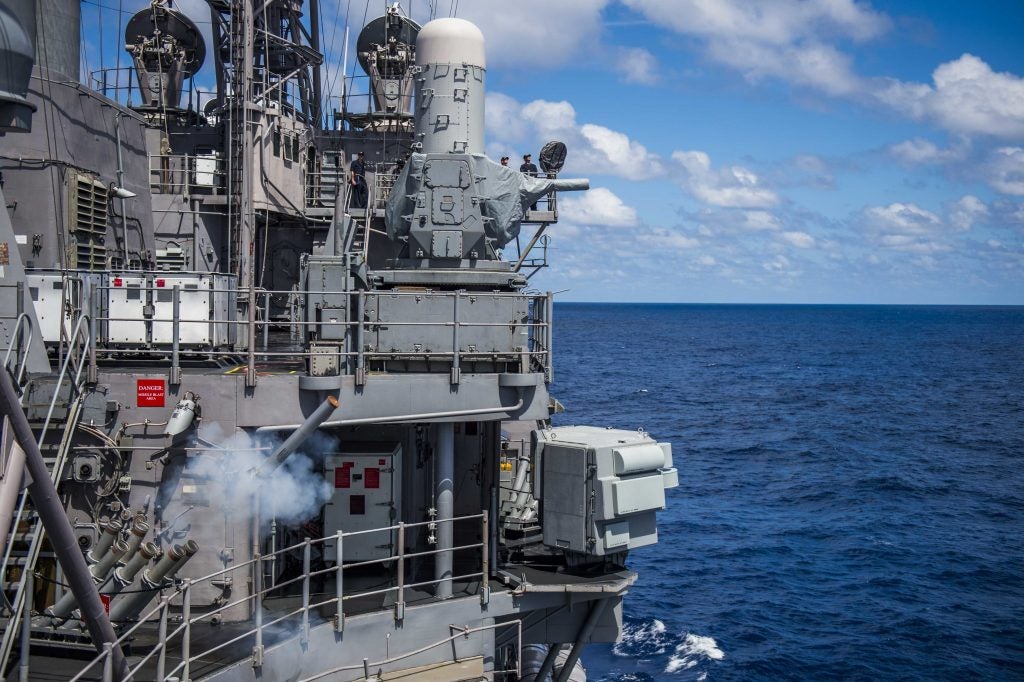Behind a Tin Foil Shield: The Importance of Soft Kill Measures in Shipboard Missile Defense
As I have written before, the balance between the primacy of the missile or the defense in the maritime battle-space is unclear at the moment. Missiles are getting smarter and faster, but defenses are getting deeper and more varied. Defending ships against missiles that cost a hundredth or a thousandth of their sticker price is a critical capability, and cheap anti-ship missiles (AShM) are proliferating at a rate unseen since the Iran-Iraq war. The near destruction of the HSV-2 Swift by a Houthi fired C-802 reminded the world of just how vulnerable undefended ships are against any kind of AShM. A subsequent engagement of the USS Mason had a very different outcome, with the Mason emerging unscathed, having probably shot down one of the incoming missiles. However, as comforting as the Mason’s relatively easy engagement of two unsophisticated missiles was, it is not a reliable model for the mass salvos that the ship or its kin may find themselves on the receiving end of in a future peer conflict.
There are two principle methods of defending a ship against AShMs aimed at it. The first is “hard-kill”, that is, destroying the missile so that it cannot physically reach the defended ship. Hard kill is the most visible method, both in person and in media. Vertical launching systems, point defense trainable missile launchers, and Close In Weapons System (CIWS) guns are all highly visible features of modern warships. Videos of ships conducting surface to air missile firings are not difficult to find, and lakes worth of real and digital ink have been spilled discussing the comparative merits of one missile or radar system to another.
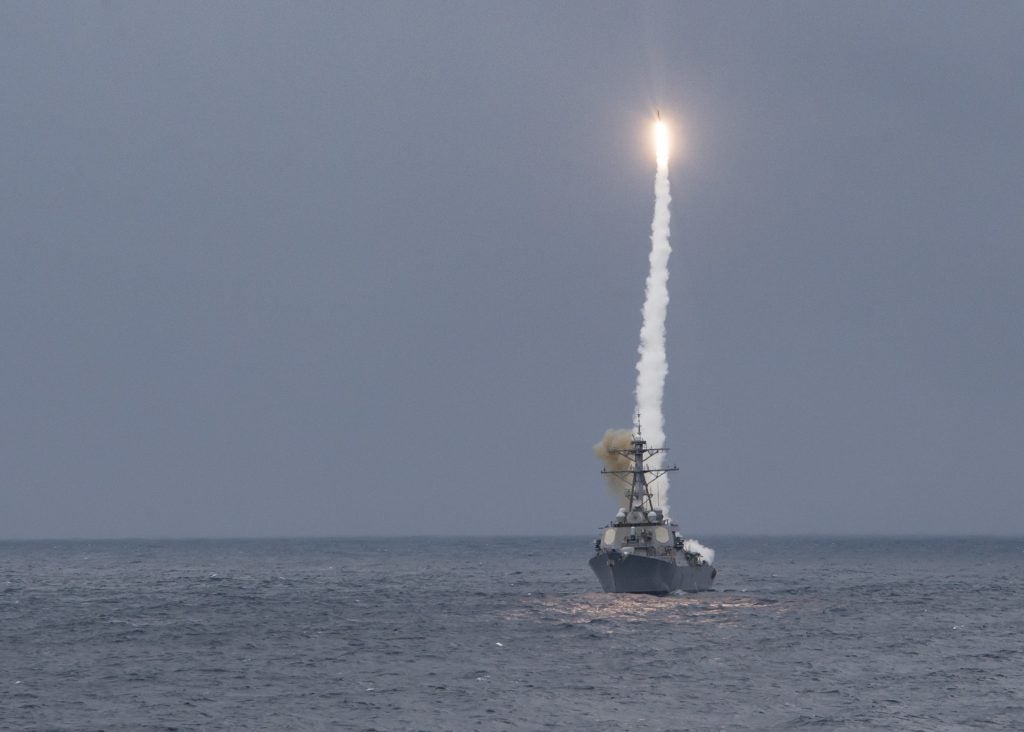
The second, less discussed method of modern ship defense is “soft-kill”, forcing the missile to miss by virtue of it no longer targeting the ship. This comes in many forms, from clouds of radar reflecting chaff and barrages distracting flares that distract both the visual and infrared spectrum to concentrated electronic warfare emissions and inflatable targets. However, these systems are not nearly as visible as the flashier missiles and guns. Chaff and flare decoy launchers are usually small and placed inconspicuously on the upper decks of a ship. EW emitter antennae are blended smoothly into the superstructure of a ship and, to the uninformed eye, look like just another radio antenna amidst a forest of its kind. Inflatable decoy launchers look uncannily like inflatable life raft canisters, while active, emitting decoy launchers look like nothing more than the rectangular steel box they are. All of this contributes to a significantly lower presence in discussions of modern ship defenses.
Despite their frequently forgotten nature, soft kill methods are arguably more important than hard kill measures, especially in the near-future time frame. Hard kill methods have a firm upper limit as to how many incoming missiles they can defend against. Once you run out of missile and bullets, you have no more hard kill capability. Whereas an overwhelming majority of ships can only carry, at the outside, a few hundred interceptor missiles at maximum load, chaff and flare launcher reloads can be carried by the hundreds. Jammers such as SLQ-32 don’t run out of ammunition, only electricity or processing power. Floating decoys such as SLQ-49 can theoretically distract as many missiles as lock onto it, as the decoy has the Radar cross-section (RCS) of a 500ft+ long ship, but the size of a mid-range sedan. It is unlikely the decoy will take a direct hit, and is an incredibly difficult thing to sink even after multiple near misses. Chaff clouds, depending on the weather, can remain in place for tens of minutes if not more than an hour.
All of this means that against the theoretical worst-case, thousand-missile salvos an adversary may launch at US fleets in the future, decoying and forcing misses will be critical to keeping the fleet intact, as it will run out of interceptor missiles before the adversary runs out of AShMs. Even with revised engagement doctrines, such as shoot-look versus shoot-shoot-look, hard kill measures do not have the depth to keep fleets safe for repeated engagements.

There several types of soft kill measures that deserve to be explored in greater detail. First among them are jammers. Shipboard jammers are, naturally, very similar to their airborne counterparts in function. However, they can leverage significantly higher power levels to achieve greater capabilities. Jamming, and the larger environment of electronic warfare, are some of the most highly classified fields in any military’s research and development world. This makes it very difficult to say anything for certain about modern EW systems, but some things are known for certain. There are a variety of forms of jamming, whether its noise, deception, distraction or other, less well known forms, it is a critical aspect of soft kill defenses.
Chaff and flare rockets are the cheapest form of soft killing an inbound missile. Almost every combat ship in the world has a chaff launcher of some description, as they are mechanically simple and thus affordable. At their simplest, chaff rocket launchers are simply tubes with electrical connections at their base to initiate the rocket motor. However, simply firing chaff into the air on the engaged side of a ship is no longer sufficient to force a miss from a modern missile. Specific patterns of chaff are required now to blind the seekers of modern missiles. This has led to the rise of trainable chaff and flare launchers. Every major naval power has their own variant, but all achieve the same basic goal. Many launchers can also fire infrared blinding flares, highly similar in concept to the flares fired by combat aircraft.
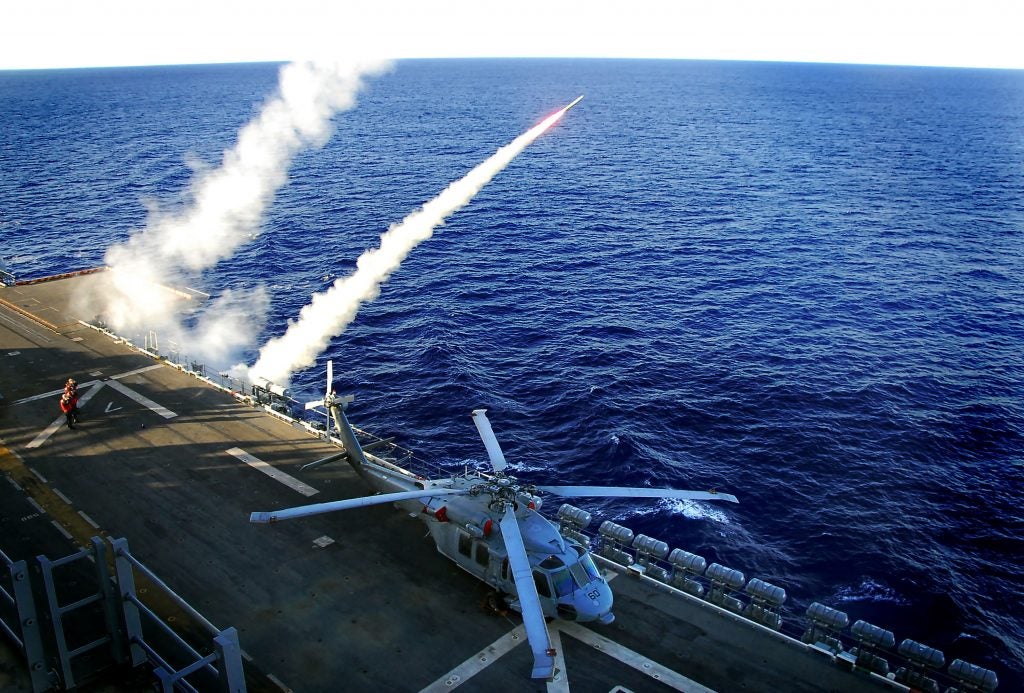
The concept of using chaff to defend against AShMs was first proven at the Battle of Latakia in 1973, where Israeli missile corvettes rendered the SS-N-2 ‘Styx’ missiles of the Syrian Komar and Osa class missile boats all but useless through competent use of chaff and jamming. By modern standards this is not that impressive as the Styx had a fantastically simple and rudimentary radar seeker, but the destruction of three enemy missile boats without taking a single hit speaks well to the importance of ship launched chaff. It is also important to note that the Israeli corvettes had no hard kill capabilities. If they had not been able to decoy and jam the incoming missiles, they would have likely suffered heavy losses.
Proper decoys are the final category of soft kill systems. These are systems like the Mk. 53 Nulka or SLQ-49 Chaff Buoy Decoy System. More expensive than simple chaff filled rockets, but far cheaper than an SM-2 or Aster 30, decoys usually have longer active time than other defensive means. They’re purpose is also different, though synergistic, than that of the expendable rocket. While chaff is meant to force a miss by confusing the inbound missile, decoys aim to present a more attractive target than the ship they are protecting. Combined with ever shrinking radar cross sections, this will likely become an ever more potent form of missile defense in the future.
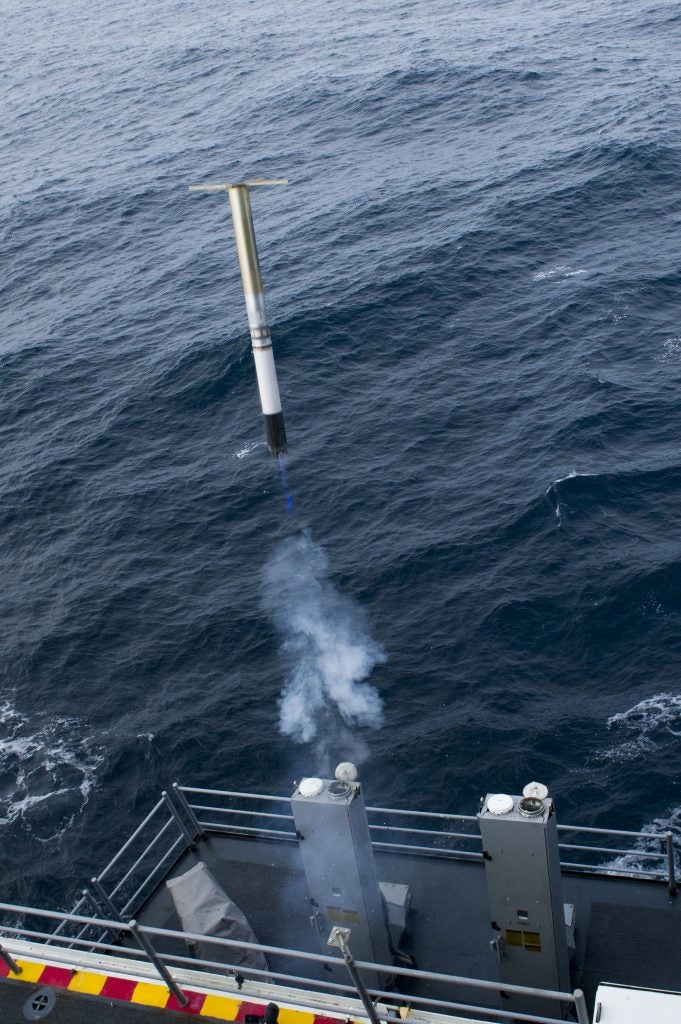
Hard kill options dominate the doctrinal thinking of shipboard missile defense. Papers have been written modeling the value of various engagement doctrines, the optimal load out of long, medium, and short range missiles, and much more, all of it focused on how to kill missiles before they can reach the ship. Much less has been written, doctrinally, about not expending limited missiles in the first place. The default option for western navies has been, since the beginning of the missile revolution, to hard-kill incoming missiles. This seems to be, at the very least, highly limiting, if not naive to the probabilities of the future maritime battle space.
The simple reality is becoming ever clearer that no surface force can defend itself against the salvos that can be fired against it. This is as true for the US as it is for China and Russia. Low observable anti-ship weapons like LRASM and the forthcoming Block V Tomahawk will reduce the probability of kill for individual interceptor missiles such that uneven quantities will need to be used per inbound missile killed. Even with the large VLS cell numbers on the new Type 055 destroyers, it is unlikely that the task force will have enough interceptors to shoot down every incoming missile, especially with the low detection times that low observable missiles like LRASM and Naval Strike Missile allow for.
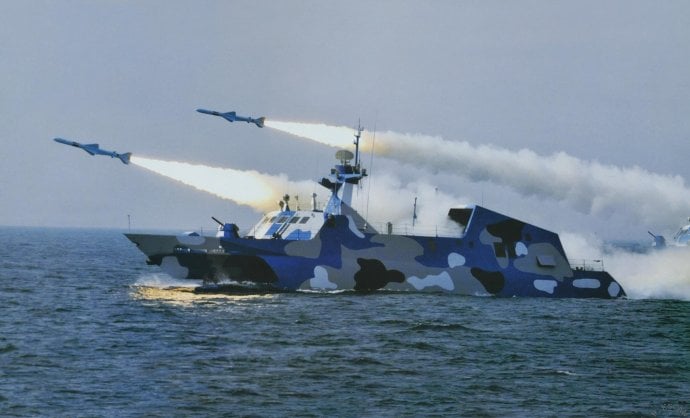
Type 022 Fast Attack Missile Craft Houbei Class of the People’s Liberation Army Navy (PLA Navy) test fires C-803 antiship missile. PLAN Photo via Global Military Review
Soft-kill options are recognized as an important aspect of the defense of a ship, of that there is no doubt. Almost every warship, even the smallest coastal patrol craft, at least carries chaff rockets to defend itself with. However, a future conflict will likely require a dramatic reorganization of doctrine to survive repeated instances of very large missile salvos between opportunities to replenish ship’s magazines. This will mean that interceptors must only be used for those missiles that either can not be decoyed in time, or can not be decoyed by virtue of technological superiority. Soft-kill options must be considered to be equal in importance to hard kill capabilities in the future, or everyone is going to be losing a lot more ships than expected.

